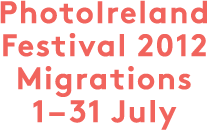Utilising models, plans, texts, photographs and a short film the exhibition “Residenzpflicht — Invisible Borders” documents the resulting geography of multiple inclusion and exclusion, its impact on the perception of space, but also strategies of res
istance.
Theme:
Refugees, while they are either in the asylum process or live in Germany with a so-called ‘Duldung’, are facing invisible borders in their everyday life. For example they are only allowed to move within a certain area due to the ‘Residenzpflicht’ (‘duty of residence’). At the same time they are forced to live in refugee homes or camps, that are often at the edge or outside of regular settlement areas.
Voucher systems instead of cash benefits, but also police controls in train stations and trains targeting people who look ‘foreign’, stigmatise refugees and intensify their social isolation.
From 14 March until 5 April 2012 the exhibition will be shown at the city hall in Erlangen.
Schwerin (14 May until 1 June 2012)
Koblenz (12 July until 3 August 2012)
www.invisibleborders.de
Living on a Border is an international research and art project that deals with the migration issue in Europe – especially in the EU – and tries
to demystify the migration phenomenon and clarify the situation in light of the fact that in public discourse migrations are usually understood as negative, threatening, or conflictual. In dissemination part of the project we use artistic, performative approach followed by multimedia installation Permanent Waiting Room to present results of the research process to wide public in all partner countries: Italy, Slovenia, Austria and the UK. Such demystification and clarification is especially important if we keep in mind that in the last decade migration processes have been increasing throughout all of Europe (primarily in the EU) and the USA (that is, in the entire so called “developed and prosperous, democratic and civilised western world”); these processes are simultaneously a product of and a threat to their governments.
title=”Migrating Art Academies book” src=”https://2012.photoireland.org/mb/wp-content/uploads/2012/03/migrating-art-academies-book-front.jpg” alt=”Migrating art academies book front” width=”400″ />
MigAA volume, titled Migrating:Art:Academies:
The Migrating Art Academies (MigAA) project is an ongoing aggregate network of participating art academies, people and events. A radical departure from the traditional learning process within bricks-and-mortar, MigAA released a cadre of graduate art students for a series of mobile and located explorations that, literally, spanned Europe, from the Baltic beaches of Lithuania to the Gironde Estuary in France, the Tatras mountains of Slovakia and elsewhere. With public manifestations in Linz, Austria at the prestigious Ars Electronica festival, in Berlin at the Collegium Hungaricum, in Royan, France and numerous other places on the way, the students piloted their Media RVs (recreational vehicles) along the highways and byways of Europe.
The basic idea behind the project is to challenge the traditional and habitual artistic routines of the students in order to inspire their continued creative development. The Migrating Art Academies project is an attempt to juxtapose the digital, non-haptic, anonymous, collective, and virtual on one hand with the unique, corporeal, and individual on the other. The project concentrates on social and interpersonal communication and encounters between differing cultural habits. “The breach between locations are the breaches between the individuals’, as the Maître à penser of this project, Vilém Flusser, once stated in his writings on migration and nomadism.
http://www.migaa.eu/







